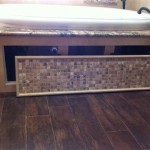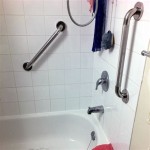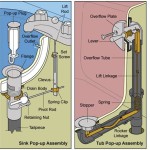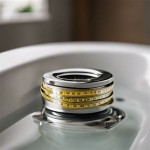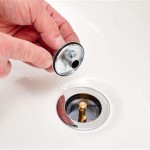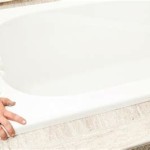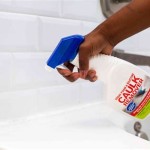How To Attach a Garden Hose to Bathtub Faucet Handles
Attaching a garden hose to bathtub faucet handles offers a practical solution for various situations, such as filling a pool, watering plants indoors, or cleaning hard-to-reach areas within the home. However, bathtub faucets are not designed to directly accommodate garden hoses, requiring specific adaptors and techniques to ensure a secure and leak-free connection. This article outlines the necessary components, preparation steps, and procedures to safely and effectively attach a garden hose to bathtub faucet handles, minimizing the risk of damage to the plumbing system and preventing water wastage.
Before initiating the process, assessing the type of bathtub faucet handle is crucial. Common types include two-handle faucets with separate hot and cold water controls and single-handle faucets that control both temperature and flow. The method of attachment will vary slightly depending on the faucet type. It is also essential to consider the pressure rating of the garden hose being used. Exceeding the maximum pressure rating of the hose can lead to bursting and potential water damage.
Gathering the required materials and tools is the next essential step. This typically includes a garden hose, a faucet adapter, Teflon tape, adjustable wrenches, and potentially some rubber washers of various sizes. The specific adapter required depends on the bathtub faucet type and the garden hose fitting. Faucet adapters are generally available at hardware stores and come in various sizes and materials, such as brass or plastic. Teflon tape is used to create a watertight seal on threaded connections, and adjustable wrenches are necessary for tightening fittings without damaging them. Rubber washers provide additional sealing and can compensate for slight size discrepancies between the faucet and adapter.
Safety precautions are paramount when working with plumbing. Prior to beginning the attachment process, ensure that the water supply to the bathtub is turned off. This can usually be achieved by closing the shut-off valves located beneath the sink or in the vicinity of the bathtub. If these valves are not present or functional, the main water supply to the house should be shut off to prevent any water leakage or potential water damage during the installation process. Further, avoid applying excessive force when tightening connections; over-tightening can damage threads and lead to leaks. Finally, never use a garden hose connected to a bathtub faucet for potable water applications. The hose material is normally not certified for safe drinking water delivery.
Understanding the Faucet Adapter
The faucet adapter is the key component that bridges the gap between the bathtub faucet handle and the garden hose. These adapters come in several designs, each suited for different faucet types. A universal faucet adapter, often constructed from rubber, can fit over a variety of faucet spouts and is secured with a tightening clamp. Another type is a threaded adapter, which is designed to screw onto a threaded faucet spout or onto a separate adapter that first connects to the spout. When choosing an adapter, it is crucial to measure the faucet spout diameter accurately to ensure a snug and secure fit. A loose adapter can lead to significant water leakage and render the entire setup ineffective. Inspect the adapter for any signs of damage, such as cracks or deformities, before installation. A damaged adapter should be replaced to prevent leaks and ensure a proper seal. The adapter should be compatible with the thread type of the garden hose connector.
Selecting the correct sized adapter is crucial for a leak-free connection. If the adapter is too small, it won't fit over the faucet spout. If it's too large, it will not create a seal. The appropriate adapter size can be determined by measuring the outside diameter of the faucet spout. Most universal adapters have a size range, so selecting an adapter that fits that range is vital. If a threaded adapter is being used, identify the thread size of the faucet spout and the garden hose connector. Using mismatched thread sizes can damage the threads on both components and prevent a secure connection.
Material choice is another important consideration when selecting a faucet adapter. Brass adapters are durable and corrosion-resistant, making them suitable for long-term use. However, they can be more expensive than plastic adapters. Plastic adapters are more affordable but may be less durable and prone to cracking or breaking, especially under high water pressure. Rubber adapters offer flexibility and can conform to various faucet spout shapes, but they may degrade over time due to exposure to water and temperature changes. The selection of the adapter material should be considered based on the frequency of use and the environmental conditions.
Attaching the Hose to a Two-Handle Faucet
Attaching a garden hose to a two-handle bathtub faucet requires a specific approach due to the presence of separate hot and cold water controls. A "Y" connector, which splits the single hose into two connections, is frequently used in conjunction with two faucet adapters. Each faucet adapter attaches to one of the faucet spouts, and the "Y" connector joins these two connections to a single garden hose. Turning on both hot and cold water is required to get flow out of the hose.
Begin by attaching the appropriate faucet adapter to each spout. Wrap Teflon tape clockwise around the threads of the faucet spouts or the adapter fittings to ensure a watertight seal. Tighten the adapters onto the spouts using an adjustable wrench, being careful not to over-tighten and damage the faucet. Next, connect the "Y" connector to the faucet adapters. Again, use Teflon tape on the threads of the "Y" connector fittings to prevent leaks. Tighten the connections securely with an adjustable wrench, ensuring that the "Y" connector is firmly attached to both faucet adapters.
Once the "Y" connector is securely attached to the faucet adapters, connect the garden hose to the single outlet on the "Y" connector. Ensure that the hose is properly threaded onto the connector and tighten it securely by hand. After the connections are completed, slowly turn on both hot and cold water faucets to check for leaks at each connection point. If leaks are detected, tighten the connections further with an adjustable wrench. If the leaks persist, disassemble the connections, reapply Teflon tape, and reassemble them, ensuring that the threads are properly aligned. The advantage of using a "Y" connector setup is the ability to control the water temperature by adjusting the hot and cold water faucet handles. If only cold water is needed, turn on only the cold water faucet. If warm water is desired, adjust the balance between the hot and cold water faucets until the desired temperature is achieved.
Attaching the Hose to a Single-Handle Faucet
Attaching a garden hose to a single-handle bathtub faucet typically involves using a universal faucet adapter or a threaded adapter that connects directly to the faucet spout. Single-handle faucets mix hot and cold water internally, simplifying the attachment process compared to two-handle faucets. Choose an adapter that fits snugly over the faucet spout or threads directly onto it. The universal adapter is a flexible solution if the spout has irregular shape or no threads.
Begin by cleaning the faucet spout to remove any debris or mineral buildup. If using a universal faucet adapter, slide the adapter over the faucet spout, ensuring that it is seated firmly. Tighten the clamp on the adapter to secure it to the spout. If using a threaded adapter, wrap Teflon tape clockwise around the threads of the faucet spout or the adapter fitting to ensure a watertight seal. Screw the adapter onto the spout, tightening it securely with an adjustable wrench. Do not over-tighten the adapter, as this could damage the faucet or the adapter itself.
Once the faucet adapter is securely attached to the faucet spout, connect the garden hose to the adapter. Ensure that the hose is properly threaded onto the adapter and tighten it securely by hand. After the connections are completed, slowly turn on the faucet to check for leaks at the connection point. If leaks are detected, tighten the connection further with an adjustable wrench. If the leaks persist, disassemble the connection, reapply Teflon tape, and reassemble it, ensuring that the threads are properly aligned. When using a single-handle faucet, controlling the water temperature is straightforward. Simply adjust the faucet handle to achieve the desired water temperature before connecting the garden hose. This allows for precise control over the water temperature flowing through the hose. Remember to always turn off the water supply before disconnecting the hose from the faucet to prevent water leakage.

How To Connect A Hose Shower Head The Diy Guide Ep 97

How To Hook A Garden Hose Up Sink Faucet Claber

How To Attach A Garden Hose Kitchen Faucet Easy Diy

How To Hook A Garden Hose Shower Head This Is What You Need

How To Fix A Leaking Bathtub Faucet Diy Family Handyman

How To Add A Handheld Sprayer Your Bathtub

How To Attach A Garden Hose Kitchen Faucet Easy Diy

Faucet Adaptor Indoor Sink To Garden Hose Filling Draining Carefree Stuff Free At 39 99

Aleasha Single Handle Tub Deck Mount Roman Faucet With Hand Shower In Gold Al 4e04g The Home Depot

Parlos 2 Handle Widespread Waterfall Roman Bathtub Faucet Tub Filler Matte Black 1434204
Related Posts

